The Story of Culture and Arts
- Image resource of Korean history
- Documents from History TextBooks
- Culture & Art Stories from Korean History
- Culture & Art Stories from Korean History - Korean
- National Institute of Korean History
- History net
- About the site
- Introduce
-
Numerous topics related to Korean culture and art are mentioned in middle and high school national history textbooks, but most of them are briefly described by era, making it difficult to understand their concepts, transition processes, and characteristics.
<Culture & Art Stories from Korean History> produces and provides video materials based on expert commentary on the flow, change process, characteristics and characteristics of each major topic in the field of culture and art in Korean history.

Scenario
Joseon Fever among Tongsinsa Fans in Japan
This is Tsushima, Japan. Every summer, the town holds a festival to celebrate an important procession from the Edo period. This festival commemorates the procession of Joseon people who passed through this area. Why did so many Joseon people go to Japan?
During the reign of King Sejong, a diplomatic delegation was sent to congratulate the inauguration of Japan’s new Shogun, or military leader. These envoys would become official ambassadors to Japan and be in charge of all official diplomatic duties. This delegation was termed “Tongsinsa”.
After the Japanese Invasion of Joseon Korea in 1592, all Tongsinsa missions were temporarily suspended.
After the death of Toyotomi Hideyoshi, Japan was unified under the Tokugawa Shogunate the Tokugawa Shogunate asked for the delegation to return and resume their trips to Japan as a way of stabilizing political unrest and resuming trade with Joseon. Envoys from Joseon were sent to Japan to mend the relationship between the two countries.
Likewise, Joseon needed to maintain amicable relations with Japan both for international stability and as a way of dispatching the Tongsinsa to keep an eye on Japan and assess the situation there.
As Tsushima is located in between Japan and Joseon, it played an important role as the location for all discussions and negotiations between the two countries.
The Shogunate and Daimyo assumed responsibility for all the costs and labor necessary for the large procession.
This is because they believed that the Tongsinsa would help demonstrate the Shogunate’s authority both at home and abroad, as well as raise their prestige internationally.
The role of Tongsinsa was not only to undertake basic diplomatic activity, but also to help facilitate the exchange of regional products, culture, and knowledge, including Confucian texts, farming methods and medical technology.
hey are most interested in the texts, paintings, and calligraphic works of our people. If they were fortunate enough to get their hands on one of these artworks, they deemed it a treasure. Even those of the lower classes, if they were literate, hoped to obtain writings from the Tongsinsa. - “Dongsa-ilgi” by ambassador Lim Su-gan, 1711(Year 37 of King Sukjong of Joseon)
Many Japanese were interested in Joseon texts, paintings, and calligraphic works, and wanted to own one of them.
Onlookers crowded along the river banks. Children sat in the front with the adults behind them. Though the crowd was much larger than the procession itself, they watched the scene with bated breath. - “Ildong Jangyu-ga”by Kim Ingyeom, 1763(Year 39 of King Youngjo of Joseon)
With so many Japanese interested in the envoy from Joseon, detailed depictions of the procession and processional course were drawn. There are paintings still in existence that describe all the important things necessary for the ceremony.
The Joseon Envoy’s Procession, A Trip of Peace and Friendship
The largest and most elaborate painting of the Joseon Envoy ever made in Japan is the one done in 1711.
In May 1711, the delegation left Hanyang (now Seoul) to Busan, from where they sailed for Japan. They would arrive in Tsushima in July and begin their procession throughout Japan.
They passed through the most important cities, such as Osaka and Kyoto, before arriving in the city of Edo (now Tokyo) in October. The delegation would then return to Joseon the following March, concluding their ten-month journey.
The delegation sailed from Tsushima to Osaka using their own ships. But between Osaka and Kyoto, at the river of Yodogawa, they transfer to elaborately decorated Japanese ships called Kawakozabune, or Keumnuseon in Korean, as the waterways were much shallower in this region. These ships were of the highest quality and reserved for the exclusive use of the Shogunate.
The delegation included about 500 people, including the envoy, vice-envoy, chief administrative officers, as well as poets, scribes, archivists, painters and more.
The Joseon performers on horseback were peculiar, yet exquisite. - “Gakusan-roku” (學山錄” by Nakamura Ranrin(中村蘭林)
The Tongsinsa haengnyeoldo are paintings depicting the procession of the Joseon Tongsinsa dispatched to Japan.
All in all, including the Japanese who entertained the delegation, over 2,000 people were involved in this large-scale procession.
The 1711 Tongsinsa procession was drawn on a total of 4 scrolls.
This picture “Scroll of the Joseon Delegation on their Way to Edo” depicts the Tongsinsa disembarking their ship at Osaka and making their way by land to Edo.
At the front of the procession, were the warriors guarding the Tongsinsa. Behind them there were flag bearers holding banners and members of the honor guard. Following them were circus performers on horseback and a musical band.
Behind all of these, there were soldiers guarding a palanquin that contained a letter from the King of Joseon. The envoy and official members of the procession followed the yongjeong.
All of the outfits of the Tongsinsa, from that of the envoy to the delegation’s lowest ranking member, were bright and colorful, and the envoy wore normal attire.
In these portraits, depicting the arrival and return of the Joseon delegation, we see the Tongsinsa delegation has changed into official attire for their journey to Edo. As their return home is much the same, though this time traveling from east to west, this part of the journey was not drawn.
The order and clothing of the procession, from the warriors to the men guarding the letter, remained the same throughout their entire journey. However, the envoy and other high-ranking officials all had to wear black hats, called Osamo, special rank badges, and their formal attire when traveling through Japan.
In this painting, titled “Portrait of the Procession of the Joseon Delegation to Edo Castle,” we see the Tongsinsa arriving at Edo and the envoy delivering the letter from the Joseon King to the Shogun. This was the most important part of the Tongsinsa’s mission.
The letter from the monarch is stored and carried in a palanquin, while the envoy wears a special court outfit with a golden hat.
Our envoys have not stepped foot on your land in nearly 30 years. As I have heard, your highness has received from your ancestors a vast amount of land to rule. (…) I hope you employ sound policy to rule your country and it is my wish that we might strengthen our mutual relations. -Excerpt from the letter of King Sukjong of Joseon to the Shogun of Japan, 1711
The letter by the King of the Joseon Dynasty included a basic greeting and wishes for closer ties between the two countries.
Once the Tongsinsa arrived at Edo Castle, a ceremony for the delivery of the Joseon King’s letter and then a tea ceremony were held. The Shogun would reciprocate the action by offering a reply to the Joseon King as well as gifts. The Tongsinsa would then begin their journey home to Joseon with the Shogun’s reply and gifts.
This fourth painting depicts the procession of the Governor of Tsushima to Edo for an audience with the Shogun, around the same time as the Korean Tongsinsa’s procession to Edo.
The painting of the Joseon Tongsinsa’s procession in 1711 is also a very special painting. The people and the clothing in the painting are exquisitely rendered, yet the painting also seems to be done in a genre painting style, as a depiction of everyday life.
These paintings demonstrating friendship between the nations of Korea and Japan are a major documentary heritage item, and at the same time serve as important reference sources providing us accurate details of the political and cultural aspects of the journey.
These paintings of the Japanese and Korean Tongsinsa have been recognized as important reference material, and in 2017 were registered as part of the UNESCO Memory of the World.
Even today, local communities throughout Korea and Japan hold festivals and reenact the elaborate procession, using the same roads taken by the Joseon Tongsinsa.
Students also create murals dedicated to the goal of peace and friendship between the two countries. The journey of the Tongsinsa continues to influence Japanese, both culturally and in their everyday lives.
[Epilogue]
Must-Know Facts on Culture and Art in Korean History
1. The name of the diplomatic delegation of the Joseon Dynasty to Japan was the Tongsinsa.
2. The Tongsinsa haengnyeoldo are paintings depicting the procession of the Joseon Tongsinsa dispatched to Japan.
3. Gukseo the diplomatic letter from the monarch, was transported in a yongjeong, a kind of palanquin.
Fine Arts & Crafts
18 films-
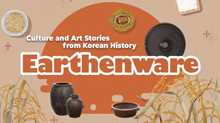 Earthenware08:28
Earthenware08:28 -
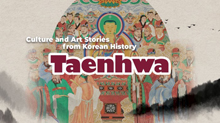 Taenghwa, or Buddhist Paintings in the Joseon Period08:36
Taenghwa, or Buddhist Paintings in the Joseon Period08:36 -
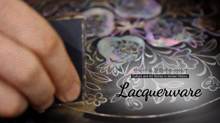 Lacquerware09:04
Lacquerware09:04 -
 Dyeing and Weaving08:21
Dyeing and Weaving08:21 -
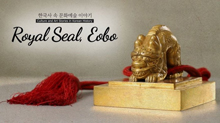 Royal Seal, Eobo07:53
Royal Seal, Eobo07:53 -
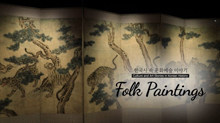 Folk paintings07:49
Folk paintings07:49 -
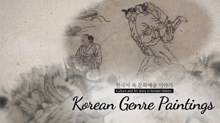 Korean Genre Paintings10:05
Korean Genre Paintings10:05 -
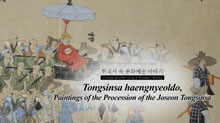 Paintings of the Procession of the Joseon Tongsinsa10:09
Paintings of the Procession of the Joseon Tongsinsa10:09 -
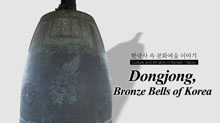 Dongjong, Bronze Bells of Korea08:50
Dongjong, Bronze Bells of Korea08:50 -
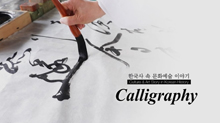 Calligraphy08:32
Calligraphy08:32 -
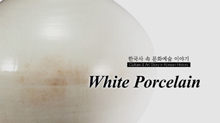 White Porcelain08:18
White Porcelain08:18 -
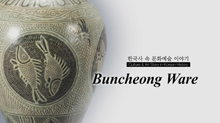 Buncheong Ware07:48
Buncheong Ware07:48 -
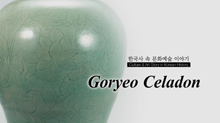 Goryeo Celadon07:54
Goryeo Celadon07:54 -
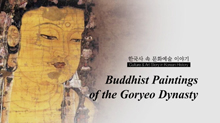 Buddhist Paintings of the Goryeo Dynasty07:57
Buddhist Paintings of the Goryeo Dynasty07:57 -
 Clay Figures, Figurines07:01
Clay Figures, Figurines07:01 -
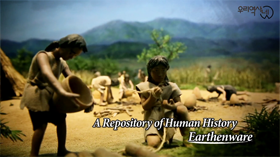 Clay Earthenware06:05
Clay Earthenware06:05 -
 Paintings of the Joseon Dynasty08:09
Paintings of the Joseon Dynasty08:09 -
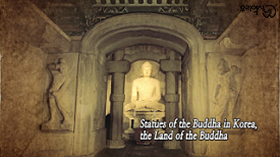 Statues of the Buddha in Korea09:03
Statues of the Buddha in Korea09:03

